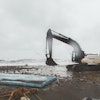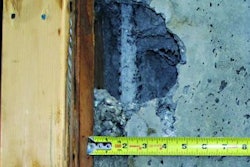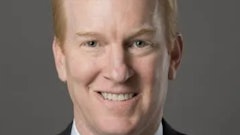CHICAGO (MarketWatch) -- With the economy showing signs of growth, some are wondering whether the worst of the housing-market bust will soon be behind the home-building industry, even if it's still a long road to recovery.
It's an easy daydream to fall into. With more Americans employed, fewer fall behind on their mortgage payments. Foreclosures drop. People have more income, and they might even decide to buy a newly built house.
But wait, let's not get too optimistic. After all, home builders have learned not to be.
In December, builder confidence remained low, with the National Association of Home Builders/Wells Fargo housing-market index at 16. A number over 50 means that more builders view conditions as good, rather than poor.
The recent data, however, is giving them some guarded optimism.
"Logically speaking, if the good news continues, you'd assume that in the spring there'd be a little tick up in activity," said Jeff Benach, co-principal of Chicago-based Lexington Homes. "The one thing that could make things worse is if prices keep dropping. That doesn't do a lot for consumer confidence."
Thousands of builders with the same thinking will convene this week at the annual International Builders' Show, held this year in Orlando.
But it's a trimmed down show compared to the boom years. With an industry still hobbled from the housing bust and suppliers still scaling back their offerings, there's simply less new product to showcase and fewer builders to look at it.
Suppliers are not rolling out products at the same rate they used to and they're spending less on marketing, said Mark Pursell, senior vice president of the National Association of Home Builders. About 1,000 companies will be exhibiting at the show, from a high of 1,500 in the past.
Overall attendance isn't what it used to be either. At last year's show in Las Vegas, slightly more than 55,000 people showed up; Pursell said he's anticipating about 50,000 will attend this year. In boom years, attendance exceeded 100,000.
"Last year, in January of 2010, after coming off of a terrible 2009, I think the builders had what I thought was hopeful optimism," said Bob McLeod, chief executive of San Diego, Calif.-based Newland Communities. "The difference this year is that some of the [economic] indicators are coming out stronger. There is more than some hope, there is some solid evidence."
But builders aren't allowing themselves to get too excited yet. "The caution is borne out of what we see happening in the economy. The caution is there because it's still pretty fragile," said Jill DiDonna, a division president of GL Homes, a home builder in Florida.
No quick fix
While positive indicators provide hope, the recovery in income and jobs needs to be sustained for the housing market to recover, Federal Reserve Board Governor Elizabeth A. Duke said in a speech on Friday. Also, until the overhang of vacant homes is reduced significantly and home values begin to firm, new residential construction is likely to remain at low levels.
Even if things do begin to improve, the industry is starting from such a low point that it will feel the effects of the downturn for a while.
"What we're seeing among the builders is still tough market competition against existing product," said Mike Larson, real-estate and interest-rate analyst at Weiss Research. "If you're a new home builder, it's hard to compete against discount homes."
That said, 2011 won't bring new, terrible news for builders, he said. "We've passed the depths of this trough. It's going to be a slow slog back," he said.
Stan Humphries, chief economist for Zillow.com, predicts that in late 2011 the housing market will finally reach a bottom, in terms of prices. But prices could fall 5% to 7% on a national basis between the end of 2010 and the third quarter of 2011, he said. That will be followed by three to five years of historically low price appreciation, Humphries said.
"Reaching the bottom is going to help the market psychology. No one is going to buy if they know that if they wait they can get it cheaper," he said.
Survival skills
Right now, many builders are having difficulty getting the financing they need for projects. One big element of NAHB's agenda has been to push for more lending in areas where it makes sense to build, Pursell said.
It's not necessarily that all funding has dried up, but the amount being lent for projects has dropped, McLeod said.
"The builder might say I want to build 20 homes, with five models. The money is still there, but the lender is saying 'Build two models and 10 spec homes'," he said. "They're not getting money to build the volume of homes that they would have done in the past."
There's good reason for the pullback. For example, at the height of the market, GL Homes, in Florida, sold 1,800 homes in a year, DiDonna said. Last year, the company sold 1,000.
Of those who are able to get financing, many are building in established areas, where there is already an existing infrastructure, said Brian Brunhofer, president of Deerfield, Ill.-based Meritus Homes.
"The builders left standing are looking for strong locations, places where there is already significant development completed, if not all of it completed. People are looking for stability in the investment that they're making," he said. "When they come on site, there's no trying to picture the dream of what the community is going to look like."
1997-2008 MarketWatch.com, Inc. All rights reserved. See details at http://custom.marketwatch.com/custom/docs/useragreement.asp.



















